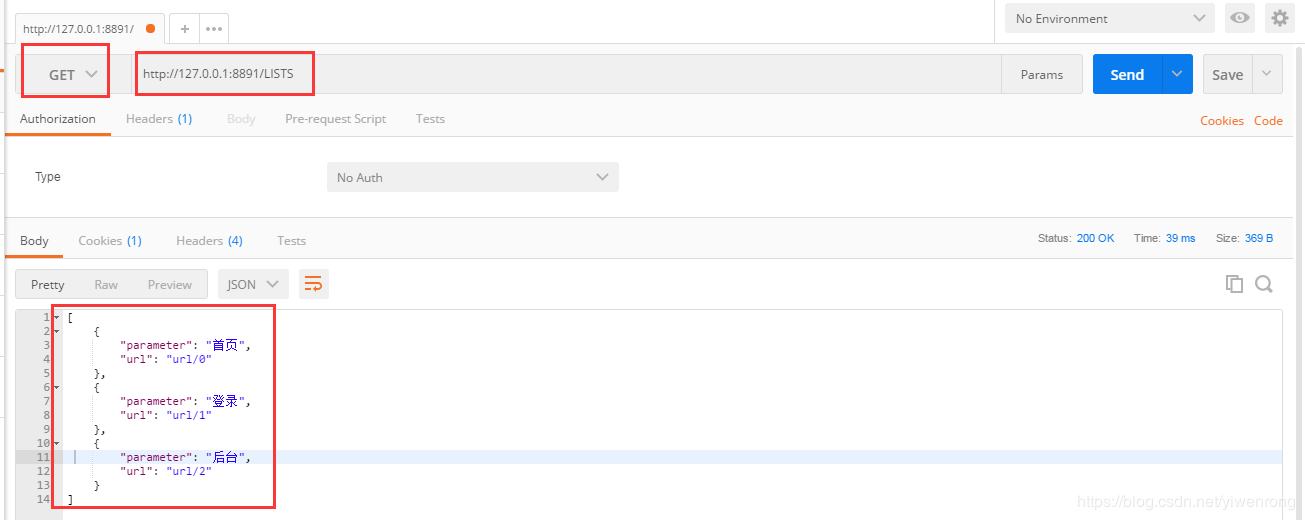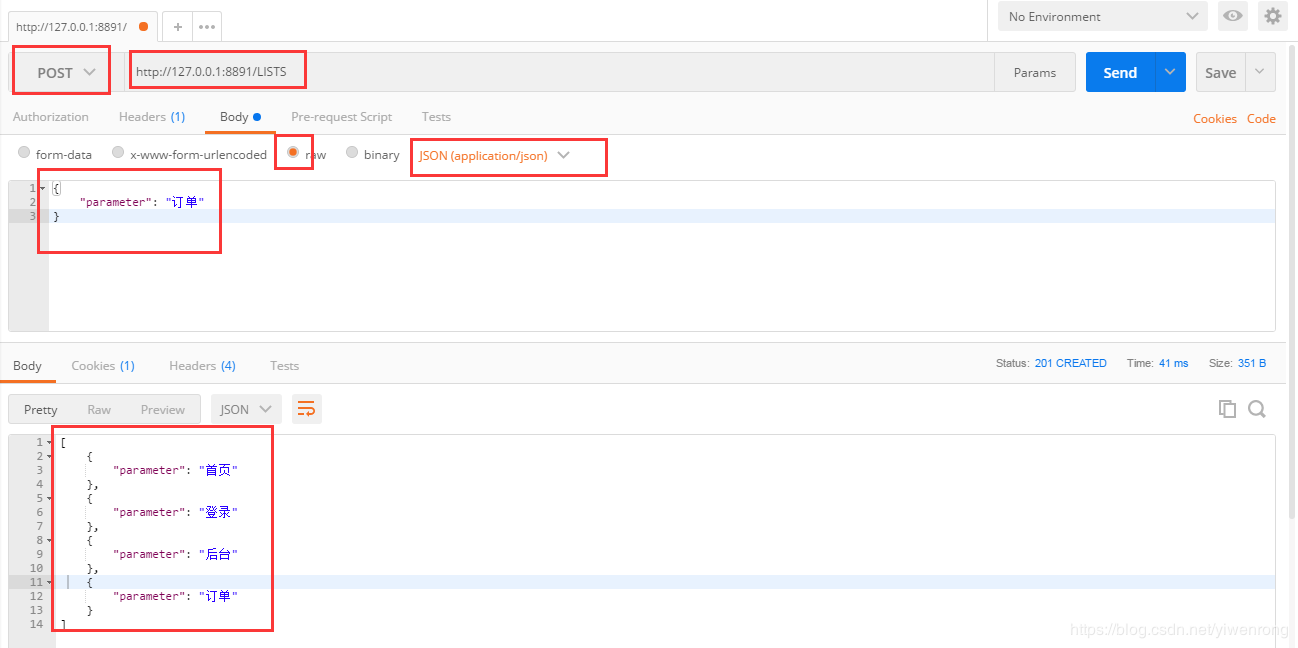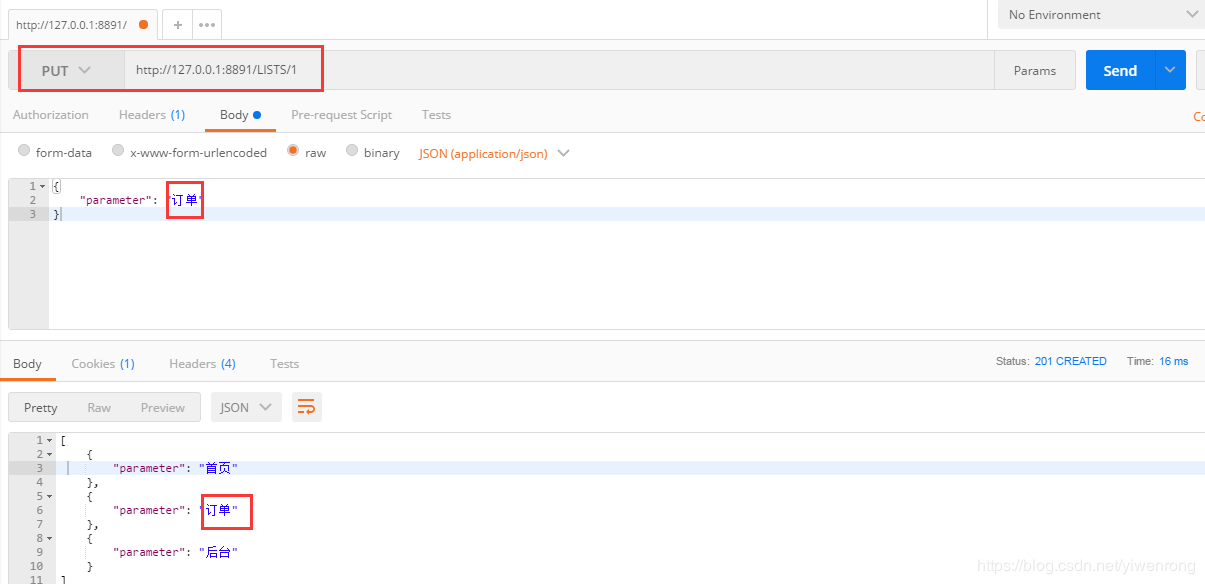Python restful框架接口開(kāi)發(fā)實(shí)現(xiàn)
理解
每一個(gè)URL代表一種資源 客戶(hù)端和服務(wù)端之間,傳遞這種資源的某種表現(xiàn)層,客戶(hù)端通過(guò)四個(gè)HTTP動(dòng)詞 對(duì)服務(wù)端資源進(jìn)行操作,實(shí)現(xiàn)“表現(xiàn)層狀態(tài)轉(zhuǎn)化” 資源:網(wǎng)絡(luò)的具體信息,如圖片、文字等 表現(xiàn)層:'資源'是一種信息實(shí)體,它可以有多種外在表現(xiàn)形式。我們把'資源'具體呈現(xiàn)出來(lái)的形式,如,文本可以用txt格式表現(xiàn),也可以用HTML格式、XML格式、JSON格式表現(xiàn) 狀態(tài)轉(zhuǎn)化:訪問(wèn)一個(gè)網(wǎng)站,就代表了客戶(hù)端和服務(wù)器的一個(gè)互動(dòng)過(guò)程。在這個(gè)過(guò)程中,勢(shì)必涉及到數(shù)據(jù)和狀態(tài)的變化。 4個(gè)HTTP動(dòng)詞:GET用來(lái)獲取資源,POST用來(lái)新建資源(也可以用于更新資源),PUT用來(lái)更新資源,DELETE用來(lái)刪除資源。安裝 flask restful
1.cmd輸入:pip install flask,安裝flask
2.cmd輸入:pip install flask-restful,安裝flask-restful
安裝過(guò)程中會(huì)出現(xiàn)如下報(bào)錯(cuò):
You are using pip version 9.0.1, however version 19.2.3 is available. You should consider upgrading via the ’python -m pip install --upgrade pip’ comm and.
解決方法
升級(jí)pip python -m pip install --upgrade pip
注意:某些Flask版本下,引入模塊時(shí)采用from flask.ext.restful import Api出錯(cuò),則可以使用from flask_restful import Api
官網(wǎng)教程
例證
restful.py 內(nèi)容:
#!/usr/bin/python3# encoding:utf-8from flask import Flask,requestfrom flask_restful import reqparse, abort, Api, Resource#初始化app、apiapp = Flask(__name__)api = Api(app)LISTS = [ {’parameter’: ’首頁(yè)’}, {’parameter’: ’登錄’}, {’parameter’: ’后臺(tái)’}]# /LISTS/<list_id>(url參數(shù)),判斷輸入的參數(shù)值列表LISTS下標(biāo)越界,越界則退出def abort_if_list_doesnt_exist(list_id): try: LISTS[list_id] except IndexError: abort(404, message='輸入的值,不在范圍內(nèi)')’’’add_argument(’per_page’, type=int, location=’args’) stradd_argument中通過(guò)指定參數(shù)名、參數(shù)類(lèi)型、參數(shù)獲取方式來(lái)獲取參數(shù)對(duì)象并支持做合法性校驗(yàn)第一個(gè)參數(shù)是需要獲取的參數(shù)的名稱(chēng)參數(shù)type: 參數(shù)指的類(lèi)型, 如果參數(shù)中可能包含中文需要使用six.text_type. 或直接不指定type參數(shù)location: 獲取參數(shù)的方式,可選的有args(url中獲取)、json(json類(lèi)型的)、form(表單方式提交)參數(shù)required:是否必要,默認(rèn)非必要提供 required=True(必須)參數(shù)help:針對(duì)必要的參數(shù),如果請(qǐng)求時(shí)沒(méi)有提供,則會(huì)返回help中相應(yīng)的信息’’’parser = reqparse.RequestParser()#入?yún)arameter,location=’json’表示為入?yún)閖son格式parser.add_argument(’parameter’,location=’json’)# 路由類(lèi),函數(shù)get、post、put、delete等實(shí)現(xiàn)http請(qǐng)求方法# url不帶入?yún)?/LISTSclass c_dictList(Resource): #類(lèi)型get,根據(jù)列表LISTS,處理,返回一個(gè)新的列表r_lists def get(self): r_lists = [] for listV in LISTS: if listV:new_list = {}#LISTS列表存的是字典,遍歷時(shí)為字典listV[’parameter’],可獲取字典值new_list[’parameter’] = listV[’parameter’]#LISTS為列表,index可以查出對(duì)應(yīng)下標(biāo)值new_list[’url’] = ’url/’+ str(LISTS.index(listV))#LISTS列表中添加字典r_lists.append(new_list) return r_lists #類(lèi)型post,在列表LISTS后添加一個(gè)值,并返回列表值 def post(self): args = parser.parse_args() list_id = len(LISTS) #args[’parameter’],入?yún)? LISTS.append({’parameter’: args[’parameter’]}) return LISTS, 201 # 路由類(lèi),函數(shù)get、post、put、delete等實(shí)現(xiàn)http請(qǐng)求方法# url帶入?yún)?/LISTS/<list_id>class c_dict(Resource): #根據(jù)輸入url入?yún)⒅底鳛長(zhǎng)ISTS的下標(biāo),返回該值 def get(self, list_id): url_int = int(list_id) abort_if_list_doesnt_exist(url_int) return LISTS[url_int] #根據(jù)輸入url入?yún)⒅底鳛長(zhǎng)ISTS的下標(biāo),修改該值,并返回列表值 def put(self, list_id): url_int = int(list_id) args = parser.parse_args() #args[’parameter’],入?yún)? parameter = {’parameter’: args[’parameter’]} LISTS[url_int] = parameter return LISTS, 201 #根據(jù)輸入url入?yún)⒅底鳛長(zhǎng)ISTS的下標(biāo),刪除該值 def delete(self, list_id): url_int = int(list_id) abort_if_list_doesnt_exist(url_int) del LISTS[url_int] return ’’, 204#設(shè)置資源路由api.add_resource(類(lèi)名,url路徑)#url,不帶入?yún)ⅲ纾篽ttp://127.0.0.1:8891/LISTSapi.add_resource(c_dictList, ’/LISTS’)#url,帶入?yún)ⅲ?lt;list_id>為變量值,如:http://127.0.0.1:8891/LISTS/1api.add_resource(c_dict, ’/LISTS/<list_id>’)if __name__ == ’__main__’: #不設(shè)置ip、端口,默認(rèn):http://127.0.0.1:5000/ #app.run(debug=True) #設(shè)置ip、端口 app.run(host='127.0.0.1', port=8891,debug=True)
控制臺(tái)運(yùn)行結(jié)果:
Serving Flask app '123' (lazy loading) * Environment: productionWARNING: This is a development server. Do not use it in a productiondeployment. Use a production WSGI server instead. * Debug mode: onRestarting with stat * Debugger is active! * Debugger PIN: 279-443-943 * Running on http://127.0.0.1:8891/ (Press CTRL+C toquit)
postman調(diào)用結(jié)果
url不帶參數(shù)
get

post,有請(qǐng)求入?yún)ⅲ袷綖閖son,入?yún)⒅底芳拥搅斜砗竺?/p>

url帶參數(shù)get,根據(jù)url入?yún)⒅等缦聢D值=1,作為L(zhǎng)ISTS的下標(biāo),獲取列表值

put ,根據(jù)url入?yún)⒅等缦聢D值=1,作為L(zhǎng)ISTS的下標(biāo),修改該列表值為請(qǐng)求入?yún)⒅担卿浉臑橛唵?/p>

put ,根據(jù)url入?yún)⒅等缦聢D值=2,作為L(zhǎng)ISTS的下標(biāo),刪除該值,成功返回狀態(tài)204

以上就是本文的全部?jī)?nèi)容,希望對(duì)大家的學(xué)習(xí)有所幫助,也希望大家多多支持好吧啦網(wǎng)。
相關(guān)文章:
1. Python TestSuite生成測(cè)試報(bào)告過(guò)程解析2. python讓函數(shù)不返回結(jié)果的方法3. python之cur.fetchall與cur.fetchone提取數(shù)據(jù)并統(tǒng)計(jì)處理操作4. JSP之表單提交get和post的區(qū)別詳解及實(shí)例5. python實(shí)現(xiàn)讀取類(lèi)別頻數(shù)數(shù)據(jù)畫(huà)水平條形圖案例6. PHP循環(huán)與分支知識(shí)點(diǎn)梳理7. 解決AJAX返回狀態(tài)200沒(méi)有調(diào)用success的問(wèn)題8. chat.asp聊天程序的編寫(xiě)方法9. 低版本IE正常運(yùn)行HTML5+CSS3網(wǎng)站的3種解決方案10. jsp實(shí)現(xiàn)登錄驗(yàn)證的過(guò)濾器

 網(wǎng)公網(wǎng)安備
網(wǎng)公網(wǎng)安備